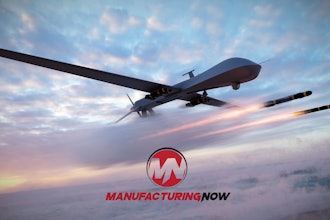When Santa comes down the chimney this year delivering Christmas gifts, children won’t notice that their G.I. Joe’s were made in China … but American manufacturers will.
Like so many other labor-intensive endeavors, toy manufacturing has been heading to overseas markets, namely China, for years. In the 1960's, “Real American Hero,” G.I. Joe manufacturing was moved from Hasbro’s Pawtucket, Rhode Island, factory to Canada. Now they are made in China.
Mattel is the world’s largest toy manufacturer, owning some of the most well known brands, including American Girl, Hot Wheels and Matchbox. Barbie is a lasting American toy, with Mattel’s headquarters in El Segundo, CA. But while manufacturing of the cardboard packaging, paint pigments and molds take place in the United States, Barbie’s nylon hair is from Japan and the manufacturing of the doll is done in China.
Swan Lake Barbie is made in Indonesia.Other timeless toys, like Play-Doh, Etch-A-Sketch, Tonka Trucks and Matchbox cars are all made in China. Even the classic Lincoln Logs are made in China.
According to data collected by the U.S. Commerce Department, the majority of toys destined for American markets are still designed in the U.S., but large-scale production has shifted to other markets, focusing on Hong Kong, Taiwan and China. Evidence of this trend is seen in the drop in American toy manufacturing employment, which has decreased by half over the last 10 years, according to the Bureau of Labor Statistics.
U.S. exports of toys decreased by six percent in 2003, to $3.47 billion, according to the 2003 Survey of Manufacturing by the Census Bureau. This is directly related to the manufacture of toys heading overseas.
Small Players, Big Demand
The American toy industry is characterized by a few large manufacturers, like Hasbro and Mattel, and many smaller producers. In 2002, 80 percent of these smaller producers employed less than 20 people, according to the North American Industry Classification System. Smaller toy companies do not have the ability to meet domestic demand, so they are regularly purchased by larger manufactures as a way to develop product lines. And many of those product lines wind up in overseas manufacturing centers.
No surprise there, according to Cliff Waldman, an Economist with the Manufacturers Alliance/ MAPI, who says that the domestic toy manufacturing base doesn’t make it worthwhile.
“Toys are a great example of low-skilled manufacturing,” Waldman said. “America is no longer going to do that.”
A majority of board games have a manufacturing split between the U.S. and China. Connect Four, Life and Chutes and Ladders are three of the few games that are completely made in America, while others are a hodge-podge of manufacturing locations. Monopoly notes its manufacturing locations as “Made in U.S.A with bagged components made in China.” Scrabble says it is made in the U.S.; however the racks, tiles and letter bag are all made in China, which leaves only the game board and packaging to be assumed to be made domestically.
The classic board game Yahtzee is made in the U.S., but contains dice made in China. Operation claims to be made in the U.S., but the tweezers, light bulb and game module is made in China, which really only leaves the packing and a few small game items.
Candyland is primarily made domestically, with only the pawns made in China.
Waldman pointed out that as globalization spreads, so does western culture and the interest in American toys abroad.“Even from a cultural point of view, it doesn’t surprise me,” Waldman said.
Toy Sales Are Serious Business
Worldwide sales of traditional toys, excluding video games, totaled $59.4 billion in 2003, up 6.1 percent from the previous year, according to the International Council of Toy Industries. Including video games, worldwide sales exceeded $85 billion.
Many toy manufacturers are very protective of their exporting of these manufacturing processes. The makers of the American Girl doll collection declined to be interviewed, responding, “We don’t share specific business information or provide marketing or manufacturing statistics…we rarely participate in business stories, and instead focus on generating interest in our American Girl products in the consumer media.” Other toy makers wouldn’t respond at all.
Because the majority of toy manufacturing occurs overseas, U.S. trade statistics do not reflect the global strength of the industry. Growth for U.S. toys increased in the United Kingdom, Korea, German, the Netherlands and Australia. These increases offset decreases in the Canadian, Japanese, Hong Kong, Paraguayan and Columbian markets.
Waldman agrees that the U.S. would like to focus strictly on high-tech equipment, like medical devices, and leave toy and lower-end manufacturing to countries like China and Indonesia.
“America wants to focus on capital goods and high R&D innovations,” Waldman said. “We’re not going to grow it if it doesn’t make sense.”






















